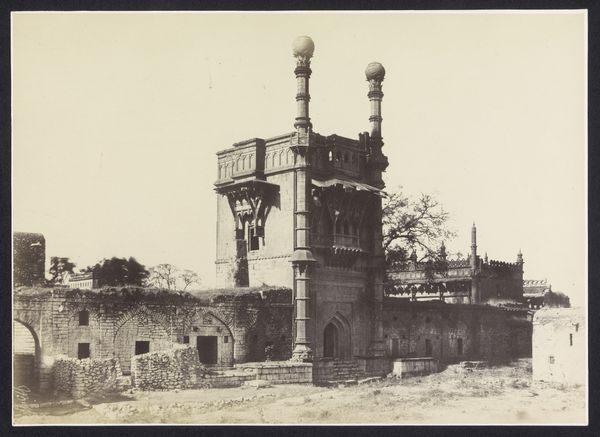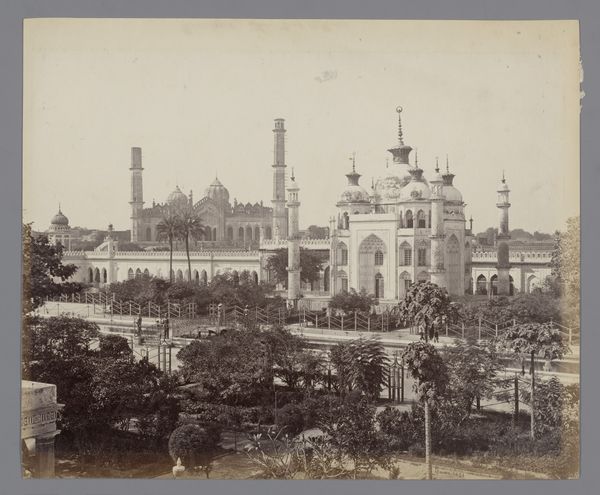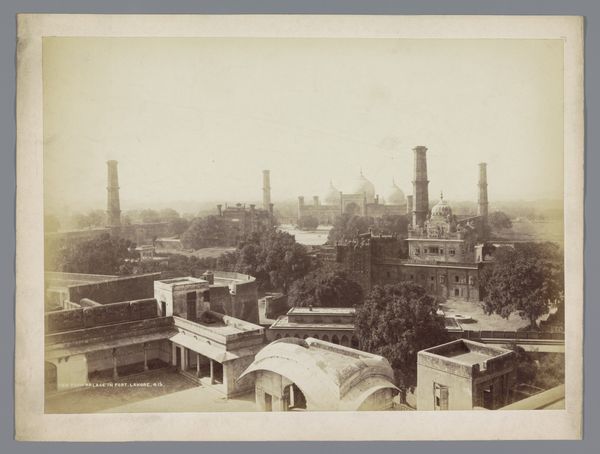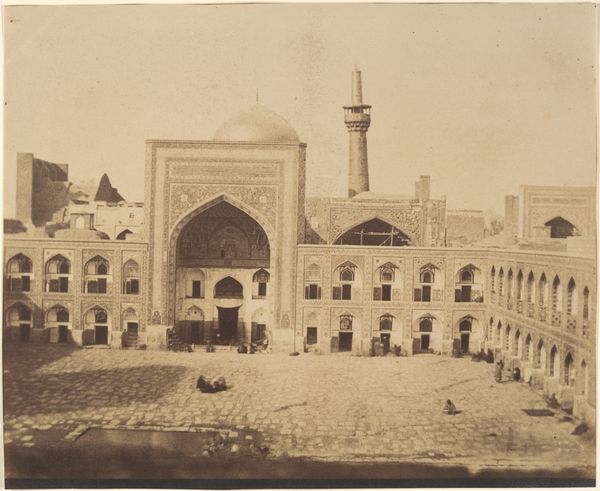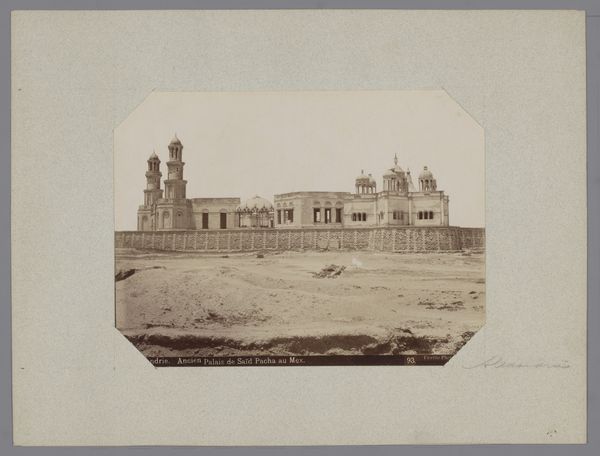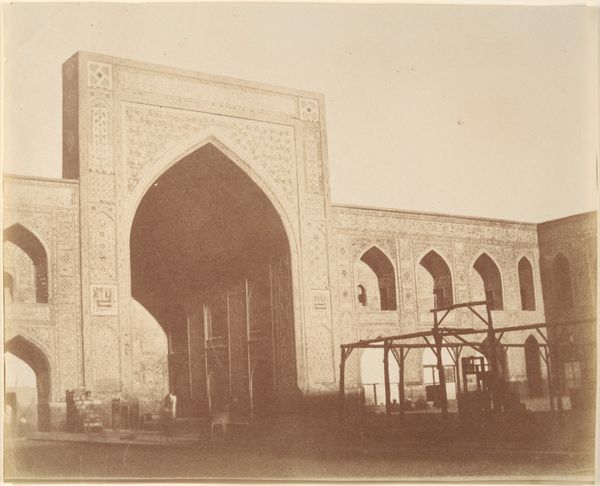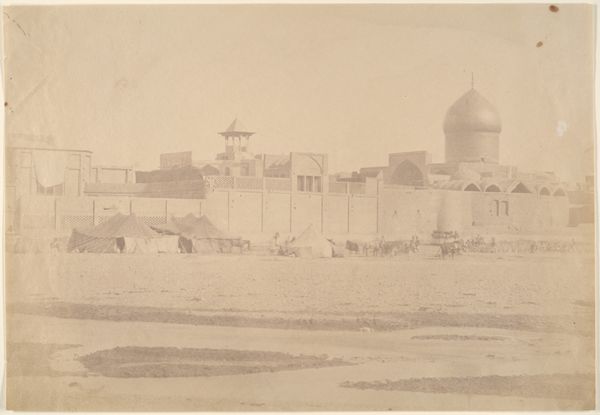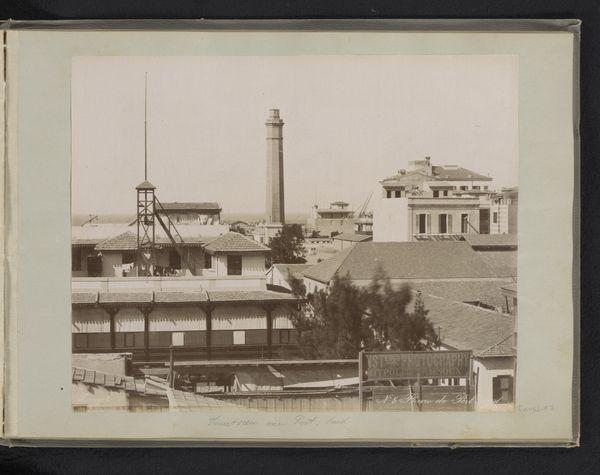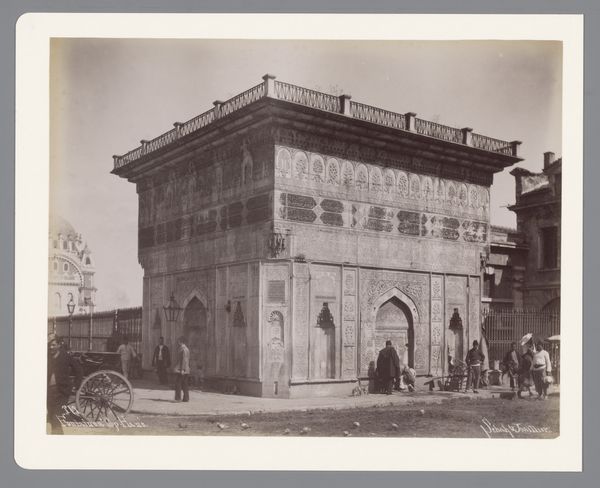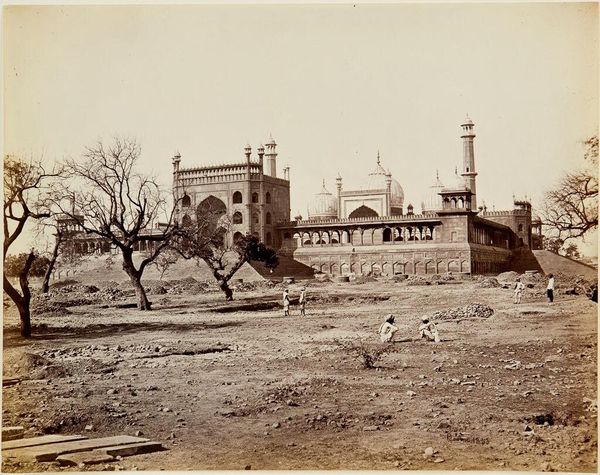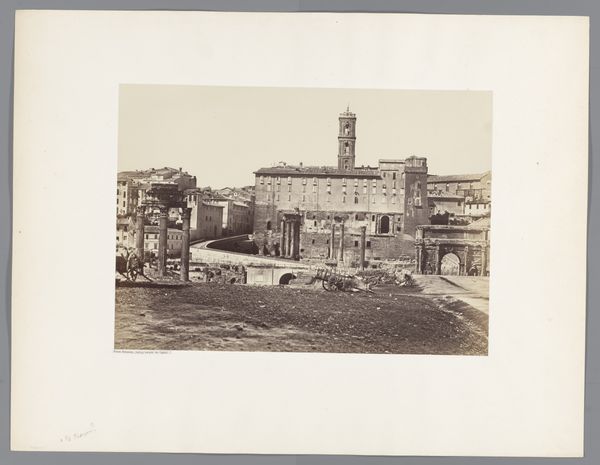
photography, albumen-print
#
landscape
#
photography
#
cityscape
#
islamic-art
#
albumen-print
Dimensions: height 243 mm, width 345 mm
Copyright: Rijks Museum: Open Domain
Curator: I find this a curiously peaceful scene; almost spectral with its soft focus and sepia tones. Editor: Indeed, the photograph, taken sometime between 1862 and 1864 by Shepherd & Robertson, presents the exterior of the Masjid-i-Jahan Numa, or Jama Masjid, in Delhi. It’s an albumen print, offering us a glimpse into 19th-century India through a Western lens. Curator: It’s the light that strikes me. How it softens the hard lines of the architecture and renders almost abstract the arid terrain. Do you think the choice to create an image like this has to do with making an Islamic building familiar and less intimidating for Western audiences? Editor: That’s astute. Photography at this time was very much a tool of documentation, but also, undoubtedly, a reflection of colonial power. Images like this circulated widely, shaping perceptions and justifying the imperial project. Consider how the lack of human presence—apart from a few distant figures on the upper level—contributes to a sense of serene emptiness, almost as if claiming the space. Curator: The very architectural language speaks, too. Those minarets rising like exclamation points, declaring something. I'm drawn to the gateways with their shadowed arches; such potent symbols of passage and possibility. Editor: The monumentality, though partially veiled by the hazy atmosphere, is intended to impress. The British certainly would have appreciated a symbolic display of dominance through grand structures, regardless of who originally commissioned them. We should note that the Masjid was built by the Mughal emperor Shah Jahan in the mid-17th century. The image bears the weight of pre-colonial, colonial, and post-colonial India simultaneously. Curator: This image evokes contemplation on faith, architecture, and cultural memory, which feels particularly potent here, layered in light. Editor: Yes, it serves as a reminder of the complexities embedded within even the seemingly simplest of visual records, the echoes of empires in the silent stones.
Comments
No comments
Be the first to comment and join the conversation on the ultimate creative platform.

